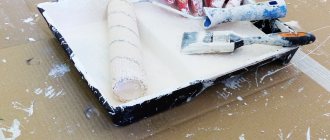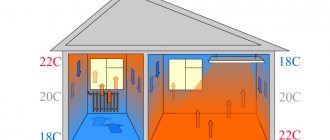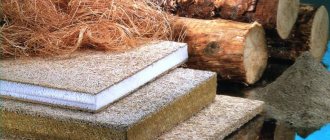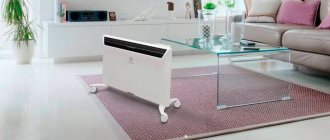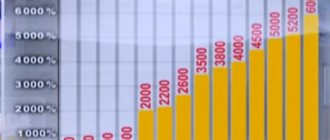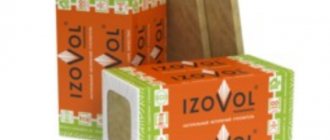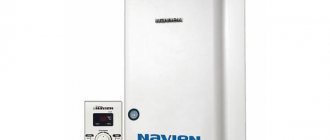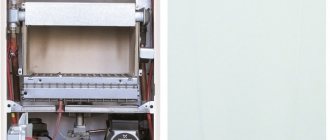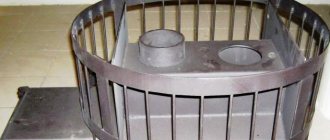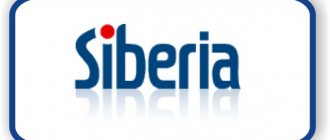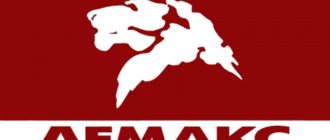Asstratek polymer insulation is a liquid mastic that can be applied to almost any hard surface like ordinary paint - with a brush or using a spray gun. As the coating hardens, it becomes elastic and acquires a closed-porous structure, that is, it turns into a continuous heat-insulating cover.
Properties and consumption of thermal insulation
| Main characteristics | Unit change | Index |
| Working layer thickness | mm | 1 – 3 |
| Life time | years | 15 – 30 |
| Heat resistance | °C | +260 |
| Liquid paint density | Kg/m3 | 535 – 655 |
| Density after hardening | Kg/m3 | 280 – 420 |
| pH value | pH | 7,5 – 11,0 |
| Drying time | h | 24 |
| Coefficient of thermal conductivity | W/m s | 0,023 |
| Vapor permeability coefficient | Mg/m h Pa | 0,02 |
| Consumption to obtain a layer of 1 mm | l/m2 | 1 – 1,3 |
Liquid thermal insulation has an enviable list of advantages, which are supported by positive reviews and numerous tests:
1. Asstratek creates a continuous coating on surfaces of even the most complex shape.
2. Preserves the internal area of the insulated room.
3. It has high weather resistance and water repellent properties, which allows it to be used as an anti-corrosion coating for metal surfaces.
4. Very easy to apply using ordinary painting tools and equipment, like any liquid emulsion.
5. Reduces heat loss from objects by reflecting infrared radiation and reducing heat transfer.
6. Leaves the possibility of finishing directly on the surface of the thermal insulation.
7. Allowed for use in any premises, as it is a non-flammable and non-toxic liquid mixture.
Flaws
Of course, ideal thermal insulation does not exist, and certainly not to find insulation with zero thermal conductivity at an affordable price. But manufacturers of such materials must strive for this, and liquid thermal insulation is still at the beginning of its journey.
Hollow Asstratek microspheres really do not conduct heat, but they make up only 80% of the total volume in liquid thermal paint. The remaining 20% comes from the binder, which retains its thermal conductivity. With this ratio, the effectiveness of insulation directly depends on its thickness. In the case of paint, it is impossible to talk about obtaining a sufficiently powerful protective layer even with high consumption.
Reflection of infrared radiation is an excellent property for thermal insulation. It just appears at high temperatures, for example, when heating radiators or chimneys are turned on.
Akterm Anti-condensate
The material prevents the formation of condensation on all types of surfaces, including concrete, brick, and metal. The scope is wide:
- interior work in the room (walls, ceiling, floor);
- containers, tanks;
- pipelines;
- metal structures;
- outbuildings – garages, cellars, basements.
Application of 2 mm paint 100% guarantees the absence of condensation when operating surfaces in the temperature range of -60...+150 degrees. Indoors, this helps create a comfortable microclimate and provide protection from fungus and mold.
The material is diluted with water and can be easily applied with a brush or airless spray. Drying time is a day.
Akterm Standard
It is a universal liquid heat-insulating material, most in demand in everyday life and in production. The paint is suitable for all types of surfaces, even plastered ones. Can be used for:
- insulation of internal and external surfaces in apartments, houses, balconies and loggias;
- hydro- and noise insulation of any structures;
- protection from UV radiation and other atmospheric factors;
- processing of transport, containers, pipes, metal structures.
"Akterm Standard" is sold in convenient packages of 5, 10, 20 l, its consumption does not exceed 1 l/sq. m of surface. Paint application is standard - spray or brush.
Application of internal thermal insulation
The process of insulating a house using a liquid heat insulator must be comprehensive. Before starting work, it is necessary to identify all heat leaks and especially treat corners, joints, walls and ceilings secured with a dowel for thermal insulation with a metal nail or a similar method, window and door openings.
The procedure is as follows:
- The surface to be treated must be dense, smooth and uniform. For these purposes, it is necessary to clean it of debris and remnants of previous material. Then remove the unevenness using putty.
In the photo - applying liquid thermal insulation for walls - Treat the prepared wall with impregnation, thanks to which you can protect it from the penetration of moisture and microorganisms.
- Then you can proceed to the direct application of the liquid heat insulator. It is important to ensure that it evenly covers the surfaces without leaving gaps or cracks. All joints when working with sheet heat insulation must be connected using sealant.
- On top of the thermal insulation material, if the separation will take place using plasterboard, care must be taken to lay a layer of vapor barrier. This will prevent moisture from penetrating inside the insulator.
- It is necessary to take care of high-quality ventilation at home. This will prevent moisture from being absorbed into the wall. But the windows must be made not of plastic, but of wood. Air circulation in the room and its ventilation must be done regularly or forcefully.
Akterm Metal
Liquid ultra-thin insulation "Akterm Metal" is designed specifically for thermal insulation of metal bases. perfectly protects surfaces from aggressive factors - sun rays, wind, moisture. A unique property of the paint is protection against burns upon contact with heated metal. Due to its environmentally friendly composition, the material is widely used inside production facilities and workshops. Other operating possibilities:
- steam lines;
- hot and cold pipelines;
- tanks and hangars;
- storage and cold storage facilities;
- air conditioning systems;
- trailers and refrigerators.
In addition to metal, paint will help protect glass and plastic surfaces from damage and heat loss. The minimum layer of material is 1 mm, peak application temperature is +260 degrees for 2 hours.
Akterm (Facade) Concrete
Liquid insulation is created for insulating and decorating the facades of buildings, structures and premises from the inside. It is perfect for surfaces made of brick, concrete and other materials. Thanks to antifungal additives, you don’t have to worry about removing mold - its appearance is excluded. The antiseptic additives included in the composition eliminate harmful bacteria, which helps improve the indoor microclimate.
The thermal insulation layer will also protect against freezing and moisture condensation on the walls. The product will retain its attractive appearance for a long time, because it is resistant to UV radiation. After drying, the paint does not require additional processing; it is used for:
- insulation of premises from the inside;
- insulation of floors under screed;
- insulation of loggias, balconies, basements;
- as a vapor barrier for underfloor heating;
- insulation of facades of residential and industrial buildings and structures;
- elimination of condensation, fungus;
- thermal insulation of surfaces of domestic and industrial facilities;
- thermal insulation of children's rooms, schools, hospitals, etc. institutions;
- thermal insulation of interpanel seams, facades;
- protecting walls and floors from freezing;
- insulation and insulation of window slopes.
The operating temperature of the finished coating is not as high as that of previous materials - up to +140 degrees. The color of the film is white; paint can be applied manually or mechanically.
Pros and cons of insulation from the inside
The advantages of liquid insulation include:
- The ability to resist fire, so there is no need to worry about fire safety.
- Low thermal conductivity, due to which this material is in great demand.
- Liquid insulation can be applied to any surface, which opens up wide possibilities for application.
- There are no costs when installing the material.
- Liquid heat insulator is not susceptible to mechanical damage and sudden temperature changes, due to which it has a long service life.
The video shows instructions for using liquid thermal insulation for walls from the inside:
Liquid heat insulator has certain disadvantages, which include:
- The long service life is not particularly long, but it can be increased if the material is applied correctly.
- There is no guarantee of thermal conductivity. Today there is not a single manufacturer who would indicate in their documentation the exact amount of stored thermal energy.
- Sensitivity of the material to negative conditions of transportation and storage.
- To obtain high-quality insulation, the material must be applied in a thick layer. This sometimes leads to high consumption of heat insulators. At the same time, the difference between actual consumption and practically is quite large.
Information from the article will help you understand what a disc dowel for thermal insulation looks like and how it is used.
This article describes which heat-insulating plaster for interior work is one of the best and how to choose it correctly.
But what is the density of Izover insulation and where exactly is it used is indicated here: https://resforbuild.ru/paneli/utepliteli/izover-texnicheskie-xarakteristiki.html
For those who want to learn more about comparing thermal insulation materials for walls, you should follow the link and read the contents of this article.
Akterm Nord
A universal thermal paint for application at sub-zero temperatures down to -35 degrees, it is used on all types of substrates, and the addition of special components provides exceptional frost resistance and anti-corrosion properties. "Akterm Nord" is intended for outdoor use, as it includes a number of solvents. The thermal insulation layer easily withstands even the harshest winters, so the scope of paint is:
- insulation of residential and non-residential buildings and structures;
- insulation of the external part of a construction project: facades, interpanel seams, roofs;
- vehicles;
- containers, tanks, reservoirs;
- domestic and industrial pipelines;
- insulation and anti-corrosion protection of metal structures;
- hangars, garages, warehouses;
- thermal protection of vehicles, containers.
The product has excellent adhesion to concrete, wood, brick, and plastered surfaces. Its consumption is higher than that of other materials in the line - 1.2 l/sq.m. m. Apply by brush or airless spray.
The best liquid thermal insulation
AKTERM Concrete™
This is ultra-thin liquid thermal insulation based on water dispersion. Suitable for:
- insulation of basements, loggias and balconies;
- insulation of facades and seams between panels;
- insulation of “breathing” concrete, brick and lime surfaces;
- protection of floors and walls from freezing;
- internal wall insulation;
- insulation and insulation of slopes on windows.
Used instead of foil in underfloor heating systems.
The consumption of liquid thermal insulation is 1 l/1 m2, if applied in a layer of 1 mm. By the way, overspending is allowed if the surface is too porous. Before using AKTERM Concrete™, experts advise first applying an acrylic primer to the surface. The color after complete drying is white.
The coating dries at room temperature for 24 hours. After this, decorative plaster is applied, wallpaper is glued, or the surface is painted with water-based decorative paint. When the heat-insulating layer dries, the coating will withstand temperatures from -60 to +150 degrees Celsius.
AKTERM Concrete™ is applied in a millimeter layer at above-zero temperatures of 7-45 degrees Celsius. If the surface area that you plan to treat is small, then experts recommend using a brush or spatula to apply liquid thermal insulation.
To treat large rooms, experts advise applying liquid thermal insulation using airless spray units. AKTERM Concrete™ is produced in plastic buckets with a volume of 2,5,10 and 20 liters.
The average cost for 10 liters is 3,550 rubles.
AKTERM Concrete™
Advantages:
- the material does not flake, even if stored for a long time;
- liquid insulation is immediately ready for use (there is no need to mix the material with anything else);
- dries in half an hour until touch-free;
- in small rooms it is applied with a roller, spatula or brush;
- there are no organic substances or volatile components in the composition - the material is fireproof and non-toxic.
Flaws:
- not detected.
Armor Station Wagon
Liquid ceramic thermal insulation "Bronya Universal" is suitable for insulating metal, wood, concrete, and plastic coatings. This product has found wide application in the insulation of various pipelines. It is used for thermal insulation of water supplies, heat pipelines, ventilation ducts, furnaces, various containers or cisterns. It is also applied to prevent the formation of condensation.
The recommended application layer is 0.5 mm, drying between each layer should be at least 24 hours. The product is applied using a brush, a special spray bottle or a spatula. If you apply Bronya Universal with a thickness of 1 mm, then the consumption is 1 liter per 1 sq.m. You should also take into account possible cost overruns, which can be up to 30%. This parameter depends on the application method and skill level.
Work with this heat-insulating material should be carried out at a temperature not lower than +5 degrees. If work is carried out indoors, then the temperature there should be +7-+120 degrees. If “Bronya Universal” is applied to a surface whose temperature is above +60 degrees, then the product must be diluted with water in a ratio of 1 to 1. After the thermal insulation has completely dried, the room can be operated in a temperature range of -60-+120 degrees.
This heat-insulating agent can be purchased in plastic buckets of 5, 10 and 20 liters. It is also produced in two versions: low-flammable and non-flammable.
The average cost of a low-flammable option for 5 liters is 1,500 rubles, and a non-flammable option is 1,600 rubles.
Armor Station Wagon
Advantages:
- Suitable for all surfaces;
- A small percentage of overspending;
- Convenient application;
- It is produced in two groups according to the degree of flammability.
Flaws:
- Not suitable for use at temperatures above 140 degrees.
Armor Nord
A distinctive feature of this liquid insulation is the possibility of application at negative air temperatures. The minimum permissible application temperature is 35 degrees. "Bronya Nord" is suitable for insulating any surfaces, including plastic, wood, brick and metal.
The manufacturer recommends applying Armor Nord using a brush, roller or spray. The applied layer should be no more than 1 mm, drying between layers should be at least 24 hours. The consumption for this application will be 1 liter per 1 sq.m. Before starting work, this thermal paint should be brought into working condition using a solvent.
After the thermal insulation has completely dried, the product can be used. We allow temperature conditions from -60 to +70 degrees. If the product is planned to be used at higher temperatures, then you should choose the “Armor Winter” thermal paint. After polymerization, this insulation can be used in temperature conditions from -60 to +90.
"Bronya Nord" is packaged in metal buckets of 10 and 20 liters. Also, this modification of thermal insulation has two degrees of flammability: low-flammable and non-flammable.
The average cost of a low-flammable option with a volume of 10 liters is 3,900 rubles, and a non-flammable option is 4,200 rubles.
Armor Nord
Advantages:
- A budget option for warm paint that can be applied at sub-zero temperatures;
- Has two degrees of flammability;
- Can be applied using any tool;
- Slight overconsumption when applied to large surfaces.
Flaws:
- A product coated with Bronya Nord cannot be used at temperatures above +70 degrees;
- Not available in small quantities.
Green Planet Thermoshield Standard
Liquid thermal insulation "Thermoshield" is used to quickly solve insulation problems. "Thermoshield" can be used on any surface that does not "breathe". For example, glass, plastic, metal, etc. This product will help cope not only with thermal insulation, but will also help in the fight against rust, mildew or mold.
Termoshield is mainly used for insulation of pipelines, metal structures, roofs, tanks, as well as for thermal insulation of plastic window frames and refrigeration units.
The consumption of Termoshield thermal insulation is 1 liter per 1 sq.m., when applying a layer of 1 mm. This product can withstand 10 cycles of frost resistance. After complete drying, they will retain their properties at temperatures from +5 to +150 degrees.
The average cost of a 1 liter bucket is 380 rubles.
Green Planet Thermoshield Standard
Advantages:
- Suitable for application to any surface;
- Does not collapse under environmental influences;
- Non-toxic;
- Not flammable.
Flaws:
- The maximum packaging volume is 10 liters.
Magniterm Standard
This insulation of the Magniterm brand is suitable for working with any surface. It is usually used for thermal insulation of pipes, roofs, walls, and various containers. After complete drying, the surface acquires a matte tint. The materials used in the manufacture of Magniterm Standard are manufactured in France and Sweden. It is also worth noting that, unlike other models of insulation, it is not water-based, but silicone.
The ambient temperature when applying Magniterm Standard should be no lower than +5 degrees. After complete polymerization, the product can be used at temperatures from -60 to +200 degrees. The average consumption when applying a layer 1 mm thick is 0.8 l/sq.m. Packing is done in plastic buckets with a volume of 10 liters.
The average cost is 3300 rubles.
Magniterm Standard
Advantages:
- Silicone base;
- Consumption is less in comparison with analogues;
- It will help reduce costs during the heating season by 40%.
Flaws:
- Packaged in 10 liter buckets only.
Teploplus
Liquid thermal insulation consists of an aqueous acrylic base with the addition of a ceramic filler. "TeploPlus" is suitable for both internal and external insulation work. This product is used for insulating products or structures made of metal, brick, concrete, wood.
A layer 1 mm thick. corresponds to mineral wool 50 mm thick. After the finishing layer has completely dried, the product can be used in temperatures ranging from -60 to +260 degrees. The layer formed by TeploPlus thermal insulation will create a thermal barrier and also reflect heat, thereby maintaining the set temperature. When applied to pipes, condensation will be prevented and protection against freezing will be provided. Also, the substances included in TeploPlus will protect the surface from the appearance of mold or mildew.
"TeploPlus" is completely safe for the environment, non-toxic and odorless.
The average cost of TeploPlus with a volume of 10 liters is 3,000 rubles.
Teploplus liquid thermal insulation
Advantages:
- After coating, the product can be used in a wide temperature range;
- Odorless;
- Environmentally friendly product;
- Suitable for application on any coating.
Flaws:
- No.
Akterm Vulcan
Unlike the previous paint, Akterm Vulcan liquid ultra-thin insulation is a high-temperature modification of the insulation, including organosilicon additives. Paint is applied to metal and brick bases. Its distinctive property is protection against burns upon contact with a hot surface. The scope of use of the product is as follows:
- heat pipes in everyday life and industry;
- chimneys;
- product pipelines;
- engine parts;
- transport and ship hulls;
- roofing and metal structures.
Thermal insulation can be used on any substrate exposed to heating up to +450 degrees, as well as the influence of aggressive substances: petrochemicals, salts, oils. Exposure to temperatures up to +600 degrees is allowed for a short time. The paint is applied with a brush, foam roller, or pneumatic spray. It is recommended to apply 2-3 layers of coating.
Akterm NG – non-flammable paint
Liquid insulation "Akterm NG" has the qualities of paint of the "Standard" modification and corresponds to the flammability class NG (KM0). Recommended for use at facilities requiring increased fire safety measures. The paint has high adhesion rates to surfaces made of concrete, brick, wood, metal, and can be used as a finishing layer for fire protection. "Akterm NG" is applied in the standard way - using a brush or a pneumatic spray gun. Sold in containers of 10-20 kg, increased consumption - 1.2 l/sq. m. After drying, the operating temperature is from -60 to +200 degrees.
Rules for applying liquid thermal insulation
Wall insulation
For insulating walls using liquid materials, insulation with ceramic components is more suitable. Liquid ceramic insulation with a water base is ideal for internal wall coverings, and for external facades the option with a varnish base is suitable. With this material you can easily insulate hard-to-reach places and do the work yourself.
Before starting work, you should prepare the surface. To do this, you need to remove all irregularities and, if necessary, plaster using a dry gypsum mixture. Afterwards you need to apply a primer. When the wall is completely prepared, you should start mixing liquid insulation. It should be mixed immediately before application and follow the manufacturer's instructions. Thermal paint is applied in several layers; a new layer can be formed after the previous one has completely dried. Also, the paint layer should be about 1 mm thick. The number of layers depends on the material and thickness of the walls. You can apply the product with a foam roller or spray, then there will be an even coating.
To insulate the walls externally, you need to not only level the surface, but also get rid of mold and mildew, and then treat it with a special antiseptic. After this, the wall is primed. When the primer has dried, you can begin thermal insulation. The weather during work should be warm; in the presence of wind or rain, it is prohibited to apply thermal paint. The layer of applied paint should be no more than 1 mm. It is recommended to use a brush or spray. Each layer takes about 24 hours to dry. Complete drying of the finishing layer depends on the number of layers applied.
Insulation of floors
To reduce heat loss, it is possible to insulate floors using liquid thermal insulation; this option goes well with a heated floor system. But this method can be used in rooms where there is no floor heating.
Before starting work, you should clean off dust and dirt and remove all uneven surfaces. Then a primer in the form of acrylic impregnation is applied. After it has completely dried, you can apply thermal paint. It is best to use a spray bottle here. It should be kept at a distance of 50 cm from the floor, and should be worked at one angle. Then the paint will be evenly distributed over the entire floor area.
Pipe insulation
Liquid thermal insulation is used for insulation of pipelines in the gas and oil industries, as well as for water supply pipes. This coating reduces heat loss and also provides protection from chemical and mechanical stress. For this purpose, a special line of thermal paints designed for pipes is produced.
Before starting work, remove dirt and rust, then prime the pipe. After the primer has completely dried, you can begin the insulation process. Ceramic thermal paint is applied using a brush or a special sprayer. It is necessary to apply about 5 layers, each layer dries in about 4-5 hours. After this, the pipe is coated with special enamel.
